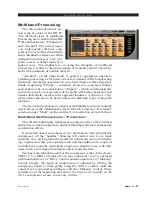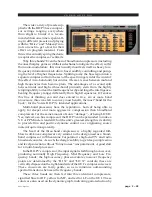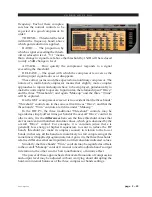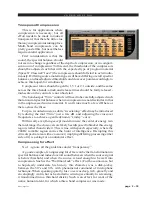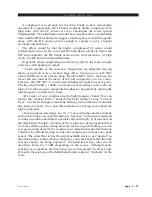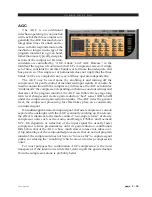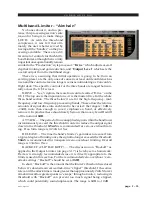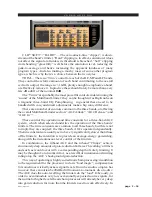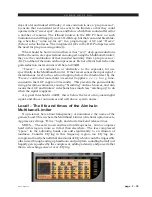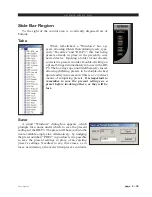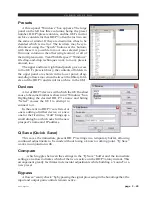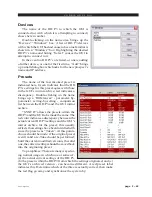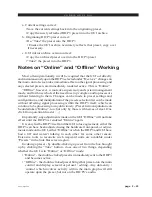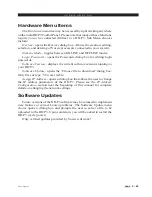
V O R S I S H D P 3 G U I
page 2 – 36
HD P3 / Aug 2006
BASS — Bass can be recovered, indeed exalted. After the three-
band limiting, there is often “room” to bring up the level of the bass,
which definitely lends a sense of increased weight and loudness to the
whole; it is probably this region which benefits the most from such
processing. Subtle EQ’ing post-limiting - rather than simply turning up
the trim - to bring up those specifically required elements of the sound,
can add worthwhile enhancement.
HIGHS — As with all rules which are merely to be broken, it is a
good idea not to squash the highs too much. It generally gives one a
headache. Fortunately the nature of energy distribution by frequency
in music is such that there is less signal level in this top band than the
other two, it doesn’t drive its limiter as hard and remains fairly
“natural”. Since as a consequence less gain-reduction is applied to it,
the high-frequency “Trim” control needs usually to be reduced a few
dB in relation to the LF and MF in order for the output spectral balance
to be somewhat sane.
Creating a “sound”
Talking of spectral balance, far more than anything else, the
“sound” of the processing (that with which you are trying to impress the
Program Director) is controlled by the three “Trim” controls. As earlier
alluded, these act as three knobs on a giant three-band EQ. Although
there is very wide latitude here, an effort should be made to keep the
average of the trims’ settings around 0dB, with overall lift-and-cut
being done by the “Output Level” control. By the time the signal has
passed through the multiband limiter, each band’s level is well-and-
truly fixed in relation to the other two, and this relationship is at the
mercy of the “Trims”. Nearly anything can change spectrally ahead of
the multiband (including EQ - subtle EQ in particular) and its effect will
as good as disappear, with the three-band’s relationship overwhelm-
ingly impressed upon it. The consistency of this sound is one of a
multiband processor’s greatest strengths. Considerable thought and
listening to (unprocessed) material to find a sound one would like to
emulate with the box is well worthwhile; it is always easier working
towards a known sonic goal. Post EQ’ing to provide detail shading to
the spectrum, having used the “Trims” as broad-brushes, is a good
approach.
Deep Gain-reduction
One should not be shy with depth of limiting in this section; a little
is absolutely not enough. Gain-reduction depths (AGC plus Limiting)
should be of amounts to make genteel ladies swoon and fly totally
against one’s better nature, previous training, and instinct. There is a
master “Drive” control there: Use it. There are good reasons for this:
For all normal program material intended to be heard, the multiband
section should be in limiting. This way the known and desired sound
of the processor is definitely having effect on the signal. This NOT like
normal “Production”-style or “Bus” compression where one is merely






